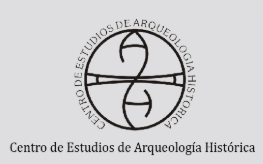El sitio “Baño de Mandinga” Potencialidad arqueológica de un basural periférico
DOI:
https://doi.org/10.35305/tpahl.vi7.41Keywords:
urban archaeology, Rosario, immigration, landfillsAbstract
The urban growing of Rosario and its alluvial-immigration status at the end of the 20th century and the beginning of the 19th century generated a dispersed city, with suburban spaces that, by those times, were running between rural and urban areas. This dynamic (and ambiguous) condition generated intermediate spaces: urbanistic interfaces, hybrid places in the sense of “no city”, inhabited spots and -at the same time- socially negative, rejected spaces. These places were often destined for inhabitation, but in some cases marginalized folk and emergent activities were established, even industrial. In the case of this work, the so called “Baño de Mandinga” (“Devil´s Bath”, c.1880-1912, MD site) would be an specific case of coexistence between settled population and disposal of garbage, together with industrial and railway activities. The aim of this work is to approach to an archaeological site, as complex as it is historically dark, and it should helps to know the old social dynamics of Rosario between the end of the 19th century and the beginning of the 20th.







